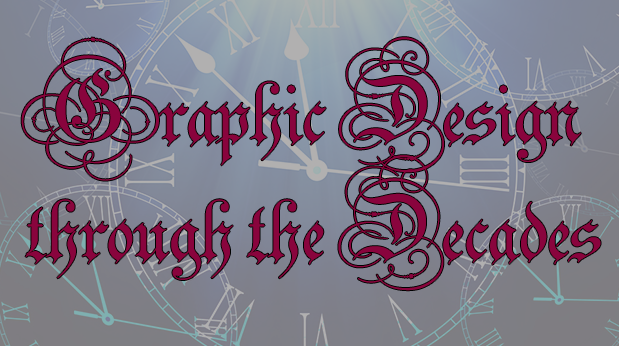Graphic design is a form of creative communication that utilizes color, texture, images, illustrations, symbols, and words to express concepts and ideas. Businesses use graphic design to prompt a reaction from their audience, such as a desire to buy a product or to join a group.
Over time, graphic design has changed to accommodate the changing social environment. The advancement of technology used to create designs has also changed graphic design styles, such as the advancement in color photography and graphic editing software. As image processing technology advances, artists are given more opportunities to expand graphic design styles.
- In the 1940s graphic design consisted of WWII propaganda posters, and post-war advertising campaigns that were mainly produced in color hand-drawn illustrations. Advertisements were relying on large, startling slogans instead of lengthy copy.
- The 1950s was the decade that introduced sexual attraction to graphic design advertisement. People in advertisements of this era were always beautiful and happy, flashing a joyous smile and glamorous looks.
- The next war era was filled with social activism and opinion. The out of the box thinking of the 1960s brought “clever ideas and big concepts” to graphic design advertisements.
- The 1970s was a turning point of advancing technology, for camera’s and personal computers. Color photography was more readily used in advertisements.
- The 1980s graphic designs featured complementary color schemes with geometric patterns. The 1980s turned the spotlight to women’s empowerment and embraced themes that spoke “Be Bold and Fashionable”.
- The 1990s featured ad campaigns that made people feel comfortable and gave a sense of belonging. Even though the style was quirky with colors clashing and wacky typography, it all had a lovable next door neighbor feel.
- In the 21st century, design has experienced more of a paradox. Some graphic design and messaging empowers individuality – be unique, act now, indulge. While others aim to invoke a sense of serenity and calmness, trying to restore the balance of a fast-paced life. Recycling styles from years past is also still a design fad. Many graphic design styles feel contemporary or tecchy with the use of geometric patterns and use of white space. Regardless of the specific design style, increasing advances in technology such as 3D design, video, and increasing quality of images to reveal so many details. Aerial shots are becoming more popular as images can be captured with the use of a drone. Google Earth and its satellite imaging opens additional doors.
The Graphic Design Formula
There isn’t an exact formula to follow for creating impactful graphic designs that will stand the test of time. This is due to the changing socio-economics and preferences of each audience in different social environments. Graphic design styles that were illustrated in the 1940’s would not communicate effectively to similar target audiences of today – the style techniques used then are just not relevant anymore. In order to communicate a message or idea effectively, a graphic design must be perceived relevant to its audience. You could think of graphic design as a fashion; what was once “in-style” may not be relevant, or seem costume-ish outside of its time period. Although an audience who may have lived through the 1940’s may still be receptive to old graphic design styles, and communication patterns that they lived through, just as 1940’s fashion may still be a suitable classic look on them.
So how do you determine what graphic design style you should use?
The key to impactful design is knowing your target market. Appeal to them. Take the time to know what their likes and dislikes are. Talk to people in the target market. Do surveys. Take a look at what other companies have tried and how they have changed over time. Check out the magazines and websites that your target market is interested in. Be relevant.
Aim to be innovative and move beyond what everyone else has done. Get ideas from all those places just mentioned, but don’t just mimic what everyone else is doing. Try out a few designs and get a gauge on reactions.
Doing a little leg work prior to design and allowing yourself to fall down the rabbit hole a little will work in your favor. Your design will enjoy a longer shelf-life and appeal to your target market.
Check out some of our graphic design tips.
Need some help with your graphic design? We’d love to hear from you: https://www.majesticsignstudio.com/resources/ask_question.html




